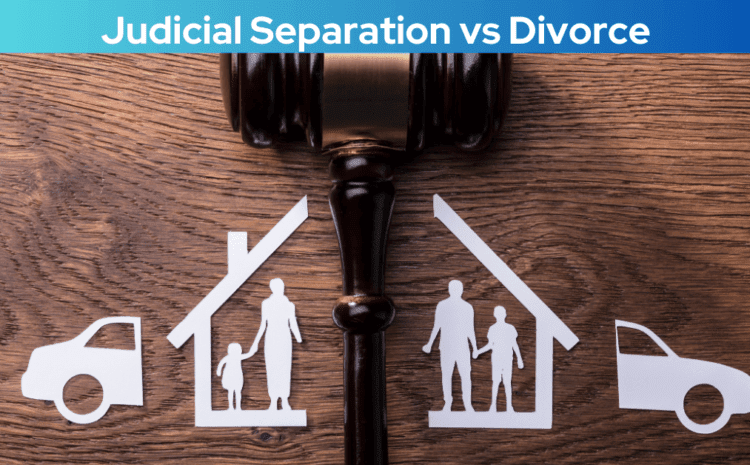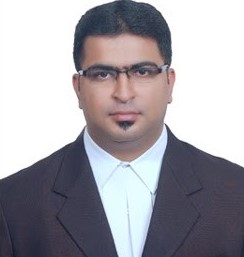
In the ongoing process of matrimonial disputes in India, understanding the distinction between judicial separation and divorce is crucial. Both remedies offer spouses relief from marital discord but have different legal implications, processes, and consequences.
This article aims to provide a detailed legal analysis of these two remedies under the Hindu Marriage Act, 1955, and related judicial pronouncements.
Understanding Judicial Separation and Divorce
Judicial Separation
Judicial separation is a legal remedy allowing spouses to live apart without dissolving the marriage. According to Section 10 of the Hindu Marriage Act, either spouse can seek judicial separation on grounds similar to those for divorce under Section 13 of the same Act. The decree suspends marital rights and obligations, providing time for reflection and potential reconciliation.
Divorce
Divorce is a legal dissolution of marriage under Section 13 of the Hindu Marriage Act. It terminates the marital relationship, freeing the parties to remarry. Divorce is sought when the marriage bond has irretrievably broken down, and there is no prospect of reconciliation.
Also Check: – Best Divorce Lawyer in Bangalore
Legal Grounds
Grounds for Judicial Separation
The grounds for judicial separation under the Hindu Marriage Act include adultery, cruelty, desertion for a continuous period of not less than two years, conversion to another religion, unsoundness of mind, venereal disease in a communicable form, renunciation of the world, and not being heard alive for seven years.
In Suman Singh v. Sanjay Singh (2017) 4 SCC 85, the Supreme Court reiterated that cruelty, as a ground for judicial separation, must be determined based on the totality of the circumstances and not just isolated incidents.
Grounds for Divorce
The divorce grounds are similar to those for judicial separation but include additional specific grounds such as mutual consent under Section 13B of the Hindu Marriage Act. Divorce can also be sought based on irretrievable breakdown of marriage, a ground that has been recognized by the judiciary (Supreme Court) despite not being explicitly stated in the Act.
In Narendra v. K. Meena (2016) 9 SCC 455, the Supreme Court granted divorce on the grounds of mental cruelty, highlighting that unfounded allegations and threats of suicide constituted mental cruelty.
Legal Process
Judicial Separation
A petition for judicial separation can be filed in the district court where the marriage was solemnized, the petitioner (wife)/respondent resides, or where the parties last resided together. Upon being satisfied with the grounds presented, the court may grant a decree of judicial separation, allowing the parties to live apart without ending the marriage.
In T. Sareetha v. Venkata Subbaiah, AIR 1983 AP 356, the Andhra Pradesh High Court held that the right to live separately is implicit in judicial separation, emphasizing that personal liberty includes the right not to cohabit.
Divorce
The procedure for divorce involves filing a petition in the appropriate court, similar to judicial separation. A key distinction lies in the ‘cooling-off’ period under Section 13B(2) of the Hindu Marriage Act for mutual consent divorce, which mandates six months from filing the petition before the decree can be granted. This period allows for reconciliation efforts.
In Amardeep Singh v. Harveen Kaur (2017) 8 SCC 746, the Supreme Court held that the cooling-off period in mutual consent divorce can be waived if the court is satisfied that the parties have genuinely settled their differences and there is no possibility of reconciliation.
In R. Srinivas Kumar v. R. Shametha (2019) 9 SCC 409, the Supreme Court emphasized that divorce should not be granted hastily and that the cooling-off period is crucial unless waived by mutual consent with convincing evidence of irreconcilable differences.
Rights and Obligations
During Judicial Separation
The marriage remains intact during judicial separation, but the rights and obligations of cohabitation are suspended. Spouses are still legally married and cannot remarry. The court decides the maintenance and custody of children, providing a structured environment for living separately while maintaining familial responsibilities.
- Maintenance and Custody: During judicial separation, either spouse can seek maintenance. The court may also decide on the custody and visitation rights of children, considering the child’s best interests. This allows for a structured environment where the children’s welfare is prioritized, even though the parents live separately.
- Reconciliation Efforts: Judicial separation provides a period during which the couple can reflect on their relationship and attempt reconciliation. This is particularly significant in societies where divorce is heavily stigmatized or where there are intense familial and social pressures to maintain the marital bond.
In Poonam v. Mahendra Kumar (2018) 9 SCC 447, the Supreme Court emphasized the importance of granting judicial separation before divorce to allow couples to reconcile. This approach is seen as more humane and considerate of divorce’s societal and familial implications.
During Divorce
Divorce legally terminates the marriage, severing all marital ties. Spouses are free to remarry once the decree is made absolute. The court resolves issues such as alimony, maintenance, and custody of children, ensuring permanent solutions to the financial and custodial responsibilities.
- Alimony and Maintenance: In divorce proceedings, the court can order one spouse to pay alimony or maintenance to the other. The amount and duration of maintenance depend on various factors, including the duration of the marriage, the standard of living during the marriage, and the financial condition of both parties. The Supreme Court in K. Srinivas Rao v. D.A. Deepa (2013) 5 SCC 226 held that continuous filing of false complaints and baseless litigation amounted to mental cruelty, significantly impacting maintenance decisions.
- Custody of Children: Divorce proceedings also involve deciding children’s custody and visitation rights. The court’s primary concern is the welfare and best interests of the child. Custody may be granted to one parent, with visitation rights to the other, or joint custody may be ordered if it is in the child’s best interest.
- Property Division: Another critical aspect of divorce is the division of marital property. The court ensures a fair distribution of assets acquired during the marriage. This division can be complex, involving evaluating both tangible and intangible assets.
Also Read: – How to win child custody in India
Impact on Marital Status
Judicial separation does not change the parties’ marital status; they remain legally married. This can benefit those who do not want to dissolve the marriage due to personal, religious, or social reasons. It allows for the possibility of reconciliation and maintains the legal framework of the marriage.
As per Section 13 (1A) (i) of the Hindu Marriage Act, 1955, if no cohabitation between the parties to the marriage for one year or upwards after the passing of a decree for judicial separation in a proceeding to which they were parties, either of the party can file a petition for dissolution of marriage based on this ground.
On the other hand, divorce results in the legal termination of the marriage, allowing both parties to move on independently and remarry if they choose. The divorce decree severs all legal ties between the spouses, freeing them from marital obligations.
Conclusion
The legal remedies of judicial separation and divorce serve distinct purposes within the framework of matrimonial law in India. Judicial separation provides a temporary respite and the potential for reconciliation, while divorce offers a conclusive end to the marital relationship. The choice between the two should be made after carefully considering the legal grounds, implications, and specific circumstances of the marital discord. Recent judicial pronouncements have further clarified the application of these remedies, ensuring that the legal process adapts to evolving societal and individual needs. Understanding these differences is vital for anyone navigating matrimonial disputes, ensuring informed decisions that best suit their personal and legal needs.

Advocate Kiran S R – A highly skilled, passionate, dedicated advocate, with vast wealth of knowledge, professionalism, ethical approach and expert skills. One of the sharpest legal mindset brings the best principles of legal practice to the forefront. A qualified Engineer turned Advocate. His passion, dedication and vision to help and assist his clients achieve the best results is his driving force.

